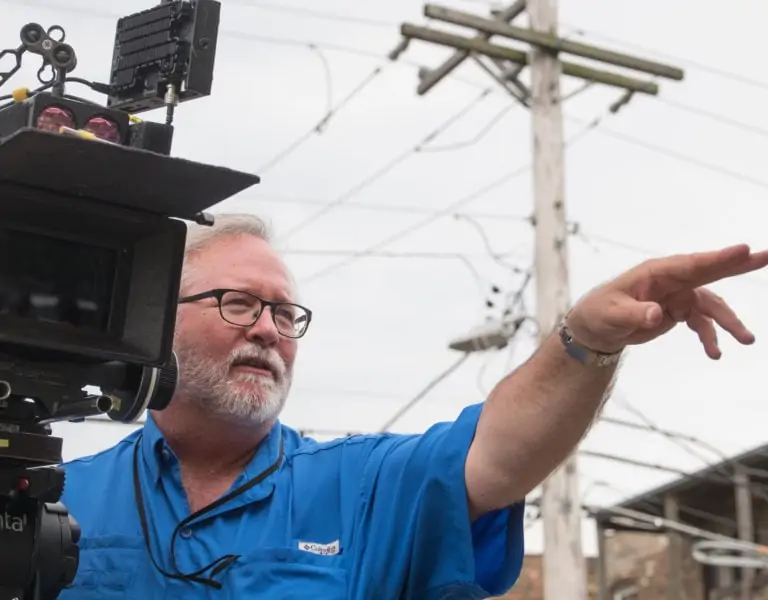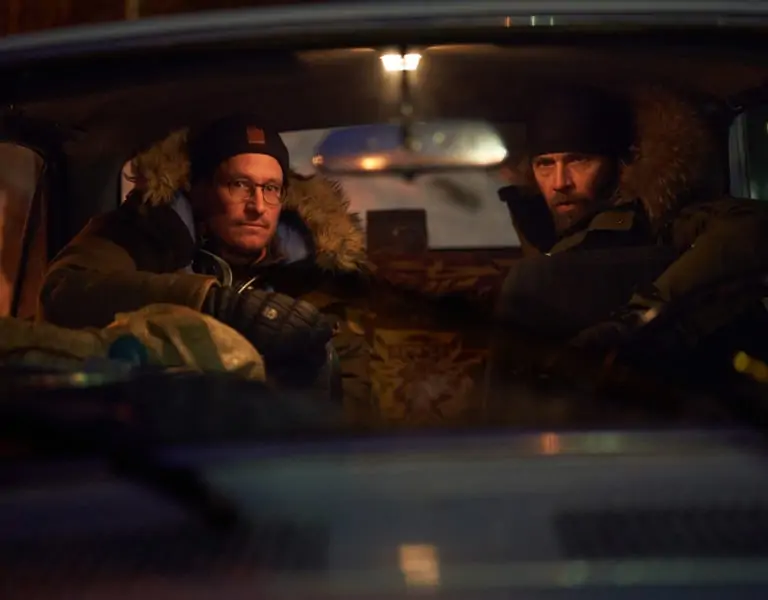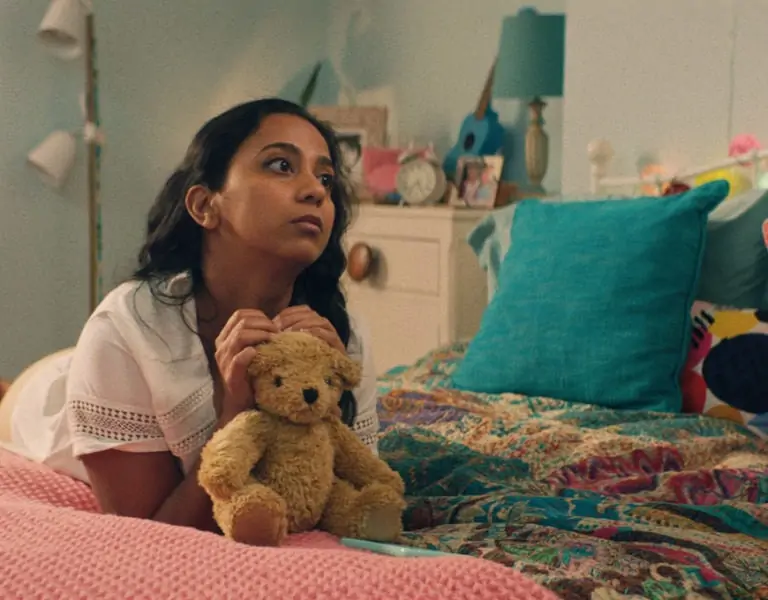As things continue to swelter in the US, our stateside columnist finds it’s not only politics heating up, but Emmy nods, summer films, Hollywood labour disputes – and everything else.
In a recent newsletter, American historian Heather Cox Richardson was applying Ernest Hemingway’s line about how one goes bankrupt – “first gradually, and then suddenly” – to the flurry of events affecting history and politics on this side of the pond, all of which have transpired since our last column here.
All those headlines, of course, are still happening along with such things as Emmy nominations, summer film releases, labour negotiations and more – the usual bread and butter here. But so much is happening “suddenly” now that, in order to fit it all in, we may have to treat things with a brevity and succinctness that might almost be Hemingwayesque.
Even if our actual sentences run longer.
So, first to those Emmy nods! A few series, such as Shōgun, The Bear, and Only Murders In the Building came out on top with twenty or more nominations each, though a look at Shōgun’s nominations shows just how the calculus for below-the-line awards differs from Oscar to Emmy. The magisterial, historical Shogun has two different cinematography nominations, for example – for DPs Christopher Ross BSC and Sam McCurdy ASC BSC , for two different episodes.

Which hints at the plethora of categories on the TV academy side – for one hour and half hour series, single and multiple camera shows, fiction and non-fiction narratives, et al.
Does a series with multiple nods in the same category enhance its own momentum? Or split academy votes? We will find out… well, “soon,” if not “suddenly.”
The nominations also gave us a chance to revisit some DPs and shows we’ve written about before, and meet new DPs on those same series – the Shōgun effect? – as well.
For example, there was Todd Banhazl ASC, nominated for the “Beat L.A.” episode of HBO’s Magic-and-Kareem-era basketball opus, Winning Time: The Rise and Fall of the Lakers Dynasty. Banhazl – who would also go on to direct an episode of the show – said he was “so proud of the entire Winning Time team, and I’m especially excited to be nominated alongside my dear collaborators including Emma Potter, our Costume Designer, and my brilliant director Salli Richardson-Whitfield.”

The shoutout to the collaboration necessary in making a compelling – never mind award-winning – series or movie, speaks not only to a profound understanding of how all these various individual arts, and parts need to work together, but also speaks to what is often the puzzlement of how voters decide to tease those contributions out separately, honouring one craft, aspect, or performance – but not another.
Such is the case with Apple TV+’s Sugar, the L.A.-set neo noir/science fiction mashup, starring Colin Farrell, as a detective with a secret, who himself is trying to uncover more than a few on an increasingly seedy and dangerous trail leading to a movie producer’s missing granddaughter.
Sugar’s sole nomination comes for cinematography, for Richard Rutkowski, ASC, and his work on the series’ fourth episode, “Starry Eyed.” We’d written earlier about the show’s other DP, César Charlone ABC SCU, who once again collaborated with director Fernando Meirelles, as he did on films like City of God and The Constant Gardener, and had mentioned wanting a more sunlight L.A., “to be as far as possible from the stereotyped shadowed, worked-out framing of noir cinema.”

Rutkowski, who collaborated with director Adam Arkin on the series’ home stretch (and with whom he’s worked before, as well, on The Americans) told us that in addition to helping the Brazilian-based DP find his American crew (and finding him “super delightful, creative and adventuresome”), the two were focusing on different aspects of L.A. (the city being, Rutkowski notes, one of the characters in the show, along with the film biz), and his half of the series was growing steadily darker than the more sun-dappled, money-and-swimming pool landscape of the opening episodes.

Increasingly, he said, a lot of the later “colour noirs” about L.A. – such as Robert Altman’s The Long Goodbye, or Chinatown, written by the recently departed Robert Towne – became part of the discussion, as did Curtis Hanson’s adaptation of James Ellroy’s L.A. Confidential. The latter starred James Cromwell as the corrupt police chief, who also stars here as Jonathan Siegel, the storied producer whose vanished granddaughter sets in motion the search, and the eventual reckonings.
As for the nominated episode, in addition to running the show’s usual inventive gamut of using not only Sony VENICEs, with the Rialto camera extensions for more fluidity, all the way to iPhones to “get shots that wouldn’t exist otherwise,” “Starry Night” also had a segment shot on… actual film.
It comes during a retrospective of Siegel’s work, which gave Rutkowski a chance to shoot the movie-within-the-story “like a Douglas Sirk film,” in anamorphic 35mm, lush 50s-era colors, high key lights, and all.
Trying to find shots that might not otherwise exist could describe the very task of a documentarian; capturing moments, fleeting or otherwise unseen, that a wider audience would never know about, had their lens not been there.
Of the docs we’ve had the pleasure of covering here, one recent entry – another Apple TV+ release – was Girls State, a sequel to its Emmy-winning predecessor, Boys State, capturing high school seniors, under the sponsorship of the American Legion, coming together for part of a summer to try their hands at forming, and campaigning for, offices in mock governments.
Or at least, “government” as it used to be understood in the U.S., before the last few election cycles.
Unlike its predecessor, Girls State has “expanded the map,” as they like to say in politics, and garnered an additional nomination not only for “Outstanding Documentary or Nonfiction Special” (which Boys State won) and again for its directors, Amanda McBaine and Jesse Moss, but this time, for its cinematography as well.

We had talked previously with Laura Hudock, who came aboard for the latter doc, and spoke of meeting some of the “girls” beforehand, and deciding who on the cinematography team would follow as this civic-minded version of summer camp unfolded. As the compelling personal narratives unfolded, stories that might “otherwise not exist” wouldn’t be missed.
Upon news of the nomination, Hudock wrote to say “I’m so excited for the entire cinematography team! I cried with happiness when I found out. I guess these moments make you reflect on your career as a whole and how far you’ve come. It’s honestly been an uphill climb but I love what I do and getting nominated gives me new hope that I can strive to go further. I didn’t come this far just to come this far.”
Indeed, coming only “this far” was one of the realizations that started to dawn on many of the participants in Girls State, in terms of how things differed for them, compared to Boys State, a few buildings away. Needless to say, this particular U.S. election season will be an object lesson for them – for all of us – in whether those walls and ceilings are still extant, or are coming down at last.
As for the team Hudock spoke of, we caught up with her colleague, and fellow nominee, Thorsten Thielow, a veteran of the earlier doc: “We learned a lot from Boys State,” he told us. “We did some incredible and thorough casting” ahead of time –”casting” being the interviews, and decisions on who to follow, the tiny crews being “a sound person and a cinematographer” picking each participant up in the morning, then “sticking it out” through the day, as the young women fomented various campaigns and platforms for the gathering’s equivalent of an elective supreme court, and a Presidency (though technically, a “governorship” here).
He adds that given the scope, there “was no way for (directors) Jess and Amanda to be there for everything,” but “when it got interesting is when they met,” or “intercepted” another character’s crew. There would be a “dance,” he says, on “who shoots a scene,” but many of them had “worked together previously” – and not just on Boys State – so clearly, the dance steps all worked out.
While Hudock mentioned she went handheld for her footage, Thielow had his Canon C-70 on a Ronin gimbal, as did most of the other cinematographers. But with the meshing of styles, he notes they also didn’t want it to look like a “patchwork,” so to “limit ourselves,” they all used the same lens, Canon CN-E Primes, and tried to use the same f stop – f2. “Everyone was encouraged to keep it at an f2,” he says, adding that it was also a bit “challenging to keep that shot if you don’t have a focus puller.”

While this was similar to how they did Boys State, since Hudock hadn’t worked on the earlier film, they “walked through scenarios” with the two days of prep they had, “and encouraged everyone to be team player – and for the most part it worked.”
And going by Emmy nominations, worked well indeed.
But if Emmy handicapping is taking a backseat in the current hurlyburly of America’s most-existential-yet election, Olympics watching, rolling heatwaves, Hollywood labor news, and so much else, there are still, in in the midst of it all, summer movie releases to talk about, too.
And not just what the box office for Deadpool & Wolverine might mean for the theatre-biz, going forward (though for the record, it’s one of the most enjoyable Marvel offerings in many a moon).
But on the other end of the spectrum are smaller releases that are always in danger of getting overlooked (barring some late winter award nominations of their own).
One such is Thelma, starring vivacious nonagenarian actress June Squibb, who finds herself the victim of a predatory scam when she’s tricked into thinking her grandson is in trouble, and needs bail. She only discovers the fraud after she sends the money, and is so incensed she begins a journey – on a scooter – as night falls over the San Fernando valley, and her trail takes her into some of its seedier byways.
Writer/director Josh Margolin based it on a scam that happened to his own grandma, also named “Thelma”. Thankfully, that Thelma got her money back but here, the chase makes for a kind of you’re-never-too-old-to-have-a-hero’s-journey tale, which is given extra poignancy as it turns out to be a final role – full of grounded dignity and empathy – for the late Richard Roundtree, playing Thelma’s companion – and the one she swiped the scooter from.

Roundtree, Margolin says ‘was so lovely to be with – at the time, we had no feeling for him not being well,” and cinematographer David Bolen calls his role “the spine” of the movie.
As for Bolen, he came on board when his agency sent him over to Margolin, who was already a fan of his work from the Florida Villages-set doc Some Kind of Heaven. “When we met, we got along really well,” Margolin says. “We went on a couple more little dates, then said ‘let’s do it – let’s make it official.’”
On those dates, Bolen brought up references like photographer Larry Sultan, whose hyperreal Kodachrome-tinged study of his parents’ lives, Letters from Home, is also set in the valley.

Bolen even thought “it’d be great if we can shoot on 35 – L.A. looks so great on film” (just ask the folks from Sugar!), but when shooting started, “the Alexa 35 had just come out,” and Bolen, already an Alexa fan, knew they could “push that ISO super far – to extreme heights,” which allowed for more night shooting, and fewer lighting set-ups to do it.
For glass, they used Hawk V-Lite Anamorphics, which, Bolen said, gave them the “action trope” of an anamorphic lens, but for “the intimacy, the V-Lites allowed us to get closer.”
He adds that “it was a joy making this film. June was everyone’s grandmother on set, (and it). really felt like a family. I felt like that energy was imbued in the film itself.”
Family also plays a role in how Margolin came to be a filmmaker, as his late grandfather, and the real Thelma’s husband, was director Ted Post. Moving between TV and film in the 60s and 70s, Post crafted some influential offerings in the incipient matinee days and late show viewings of this columnist’s early filmgoing life, including Beneath the Planet of the Apes, Hang ‘em High, and the Dirty Harry / Clint Eastwood entry, Magnum Force.
Bolen also mentioned the on-set freedom he felt in being able to discover shots along with Margolin. “Having that freedom is so valuable to a cinematographer.”
As for future collaborations, both are looking forward to it. Margolin is back to writing after being on the hustings for Thelma, and looks forward to collaborating with Bolen again “as soon as I have a script that makes a lick of sense.”
As for some quick and concluding notes on the trying to make-sense-of-things front: The Russo Brothers – now busy prepping the next two Avengers films – and their indie-minded production company AGBO, partnered with the Slamdance film fest for another of their DTLA (as in “Downtown L.A.”) summer showcases.
For two July weekend days, in their small studio space in a grudgingly gentrifying area between the fashion district and skid row, folks gathered for workshops on writing pilots and scripts, and on day two, handicapping where AI might be taking us in the narrative and game sectors.

Given that TV pilots have replaced both novels and feature spec screenplays as what we might call “the main artifact of writerly hope” in this day and age, the Saturday gathering was quite busily attended. Attendance dropped off Sunday, for the AI discussions, but a panel on the “State of the Union” of Digits, Interactivity and Gaming (a.k.a. “DIG”), brought not only interesting short film and game installations into the space – allowing for degrees of viewer participation – but the acknowledgement that former game-only rendering engines like Unreal and Unity, now used in LED walls, volumes, and VFX sequences everywhere, will continue to slip their bonds and become more prevalent in productions, large and small, as well as for other uses, such as in building, design and training first responders.
Audiences seem to be eager for new experiences, the panel surmised, but – noting the falling sales of VR headsets – not necessarily eager to have that experience entirely led by technology. Or at least, not to the point where it’s making them queasy.
As for Slamdance, which started as a punkier, more accessible Park City alternative to Sundance, that festival is coming to L.A., for the first time, early next year, which puts a major movie fest back in Hollywood for the first time in many moons.
The times remain a-changin’.
On which note, that same Sunday was the one where Joe Biden resigned his candidacy as the Democratic nominee, and by the time anyone returned from DTLA that evening to check the news, the party was already coalescing around vice president Kamala Harris as its nominee.
The next day, IATSE, whose members had overwhelmingly ratified their contract (even given the somewhat general language about AI protections, an issue which now has SAG-AFTRA’s actors on strike against the gaming industry), sent out another release announcing their executive board was endorsing Harris for president. “We are united in our mission to deny Donald Trump, who crossed an IATSE picket line in 2004, another four years of assaulting workers’ rights, undermining unions, and jeopardizing our democracy,” the statement said, in part. The whole endorsement came less than 24 hours after Biden’s announcement, as the “suddenly” part of “gradually, then suddenly” now seems like it will mark the time not only between now and the next column, but for many months to come.
We’ll see you back here, suddenly or otherwise, just ahead of the Emmys.
@TricksterInk / AcrossthePond@gmail.com










